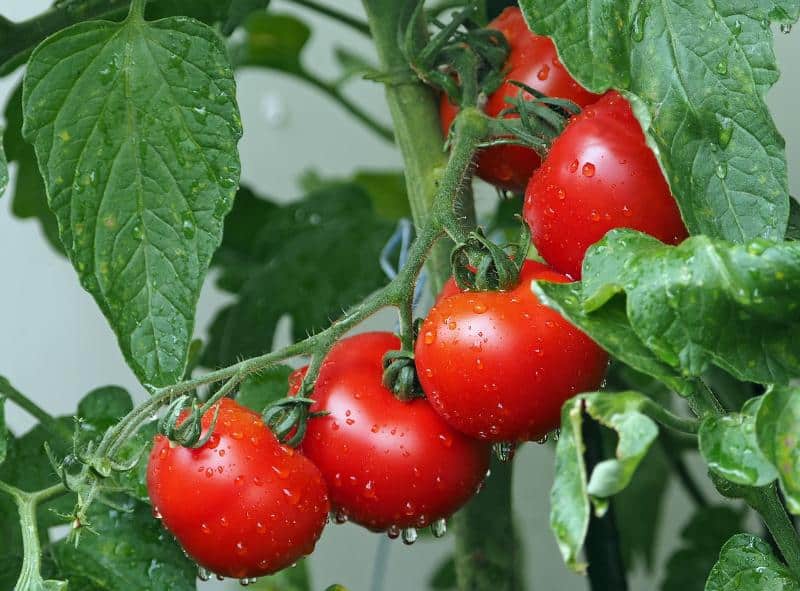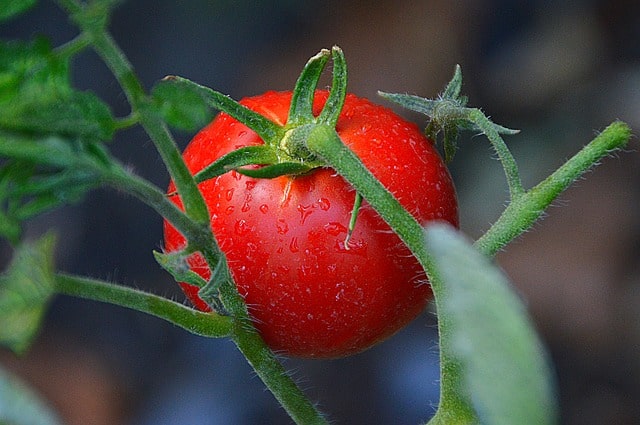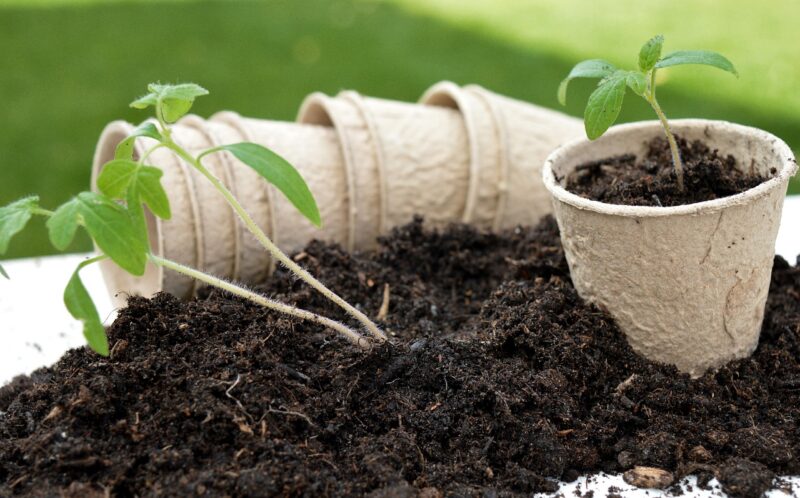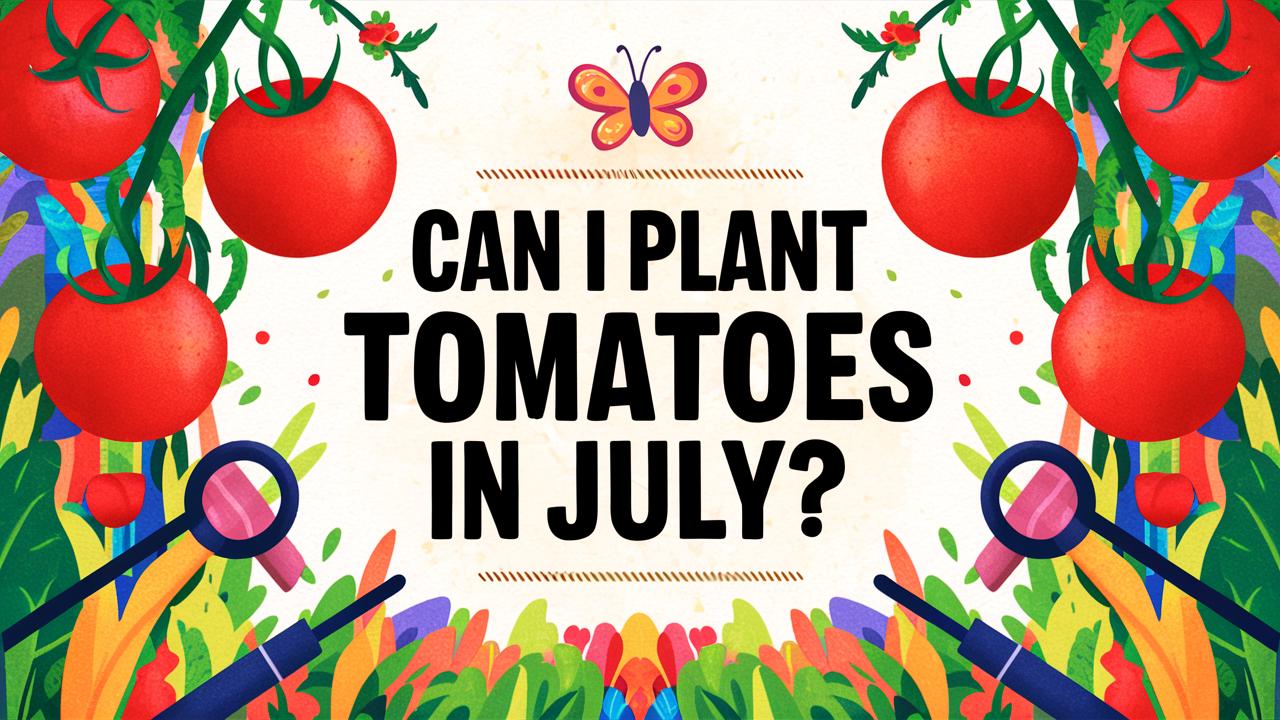In this guide, we’ll get into the nuances of tomato planting in July, discuss factors that influence successful growth, and provide a roadmap for getting those juicy fruits into your garden, even at this late stage.
Understanding Tomato Varieties

Before diving into the specifics of planting in July, it’s crucial to understand the different types of tomatoes available, as this can impact your success. There are generally two main categories: determinate and indeterminate varieties.
Determinate Tomatoes: These are bush-style plants that typically bear all their fruit at once and have a set height. They are often popular for container gardening and smaller spaces. If you’re planting in July, choosing a determinate variety is wise as they tend to mature faster.
Indeterminate Tomatoes: These varieties keep growing and producing fruit throughout the season until frost kills them. They can become quite large and require staking or cages for support. While they can be planted in July, they may not yield as much fruit before the cold weather sets in, especially if your growing season is short.
Knowing which variety you choose is essential when planning your planting date, as certain varieties will be more forgiving of late-season planting.
Timing and Climate Considerations

When asking if you can plant tomatoes in July, one of the primary considerations should be your local climate. Tomatoes thrive in warm temperatures and need a minimum of 60°F (15°C) nights to grow effectively.
Growing Zones
The USDA Plant Hardiness Zones can be an excellent guideline for understanding your growing conditions. For instance:
Zones 9-10: These regions have longer growing seasons, making it feasible to plant tomatoes in July and still have time for them to mature before cooler weather sets in.
Zones 6-8: If you find yourself in one of these zones, planting in July is still possible, but you must choose fast-maturing varieties and be mindful of your first frost date.
Zones 3-5: In these cooler zones, July planting may not be advisable due to shorter growing seasons and cooler temperatures that can impede growth.
Adjusting for Your Zone
While tomatoes can still be planted in July in warmer zones, it’s vital to pay attention to your local climate and potential weather patterns. Heat waves, excessive rain, or unseasonably cool fluctuations can impact your success. Always check long-term forecasts and prepare for the conditions that may affect your tender plants.
Soil Preparation and Location

If you’re determined to plant tomatoes in July, the soil where they will grow must be well-prepared. Here’s what you should keep in mind:
Soil Quality
Type: Tomatoes prefer loamy, well-drained soil rich in organic matter. If your soil is dense or clay-like, you may want to amend it with compost or peat moss to improve drainage and fertility.
Nutrient Content: Conduct a soil test to assess pH and nutrient levels. Tomatoes thrive in slightly acidic soils (pH of 6.0 to 6.8). You can adjust pH with lime (to raise it) or sulfur (to lower it).
Location
Sunlight: Ensure the site receives at least 6-8 hours of direct sunlight each day. Lack of sufficient sunlight can lead to poor fruit set and weak growth.
Air Circulation: Good airflow around your plants helps prevent disease and keeps foliage dry. Avoid environments that are overly humid or sheltered from breezes.
Starting from Seeds vs. Transplants

When planting tomatoes in July, you might consider starting from seeds versus using transplants, particularly if you’re getting a late start.
Using Seeds
Though starting seeds in July means you may have to deal with a diluted growing season, it can be done, especially if you choose quick-maturing varieties.
Choose the Right Seeds: Look for varieties with a short maturity rate, usually 55-70 days to harvest.
Indoors vs. Outdoors: Start seeds indoors for better control over conditions, then harden them by gradually exposing them to outdoor conditions before transferring.
Transplants
Transplants provide an established head start and are often the preferred method for late-season planting.
Choosing Transplants: Look for healthy seedlings with a robust stem and dark green leaves, ideally between 6 to 12 inches tall.
Acclimating Your Plants: Before planting, it’s helpful to harden off transplants by gradually exposing them to outdoor conditions for about 7-10 days.
Planting Techniques for Successful Growth

Once your soil is prepared, and you’ve selected your seeds or transplants, it’s important to focus on proper planting techniques to ensure a successful harvest.
The Planting Process
Spacing: Space your plants about 18-24 inches apart for indeterminate varieties and 12-18 inches for determinate types. This gives them enough room to grow and ensures proper air circulation.
Depth: When planting, bury the stem deep, up to the first set of leaves. Tomatoes can develop roots along buried stems, encouraging stronger growth.
Watering: Water plants immediately after planting. Ensure your watering schedule maintains consistent moisture without oversaturating the soil.
Companion Planting
Implementing companion planting can also attract beneficial insects and deter pests. Consider planting basil, marigolds, or parsley nearby, as they are known to enhance tomato growth and repel common pests.
Maintaining Growth
Once planted, your tomatoes require ongoing care to thrive.
Watering and Nutrients
Watering: Tomatoes generally need about 1-2 inches of water per week. Water consistently, focusing on the soil rather than the leaves to prevent fungal diseases.
Fertilization: Use a balanced fertilizer at planting, then switch to a low-nitrogen fertilizer as the plants start to set fruit. Over-fertilizing can lead to lush foliage with little fruit.
Pruning and Support
Pruning: Remove suckers (the small shoots that grow in the leaf axils) to improve air circulation and focus plant energy on fruit production.
Supports: Utilize cages or stakes to support indeterminate varieties, preventing them from sprawling and keeping the fruit off the ground.
Pest and Disease Management
Awareness is key. Keep an eye out for common pest issues like aphids and hornworms, and be vigilant about signs of diseases such as blight or blossom-end rot. Early intervention can save your plants – whether that’s through organic insecticides, proper watering techniques to avoid blossom-end rot, or plant rotation strategies to mitigate disease.
Expected Yield and Timing
So, if you’re planting in July, what can you realistically expect in terms of yield and timing?
Harvesting Timeline: Depending on the variety, you can expect to start harvesting anywhere from 60 to 90 days after planting. If you plant mid-July, you might be looking at a late September to early October yield.
Yields: Determinate varieties will generally produce a concentrated crop, while indeterminate types can yield over time. Expect anywhere from 10-30 tomatoes per plant, depending on care and conditions.
Conclusion: The Verdict on July Planting
So, can you plant tomatoes in July? Absolutely! While July isn’t the conventional time to start, with the right strategies, it is entirely feasible. Your success hinges on choosing the right varieties, adequately preparing your soil, providing essential care throughout the growing season, and being mindful of your local climate conditions. While the journey might not be the typical timeline most gardeners adhere to, you can still enjoy the rewarding experience of growing delicious tomatoes in the peak of summer.





